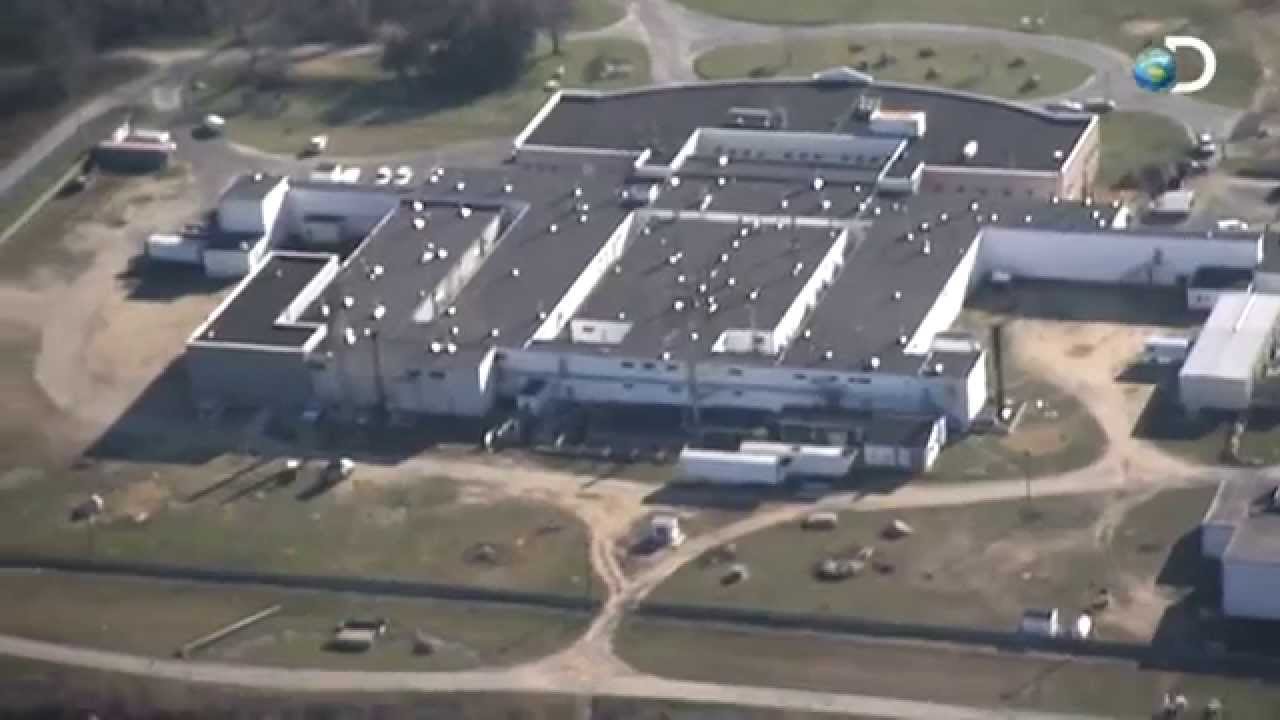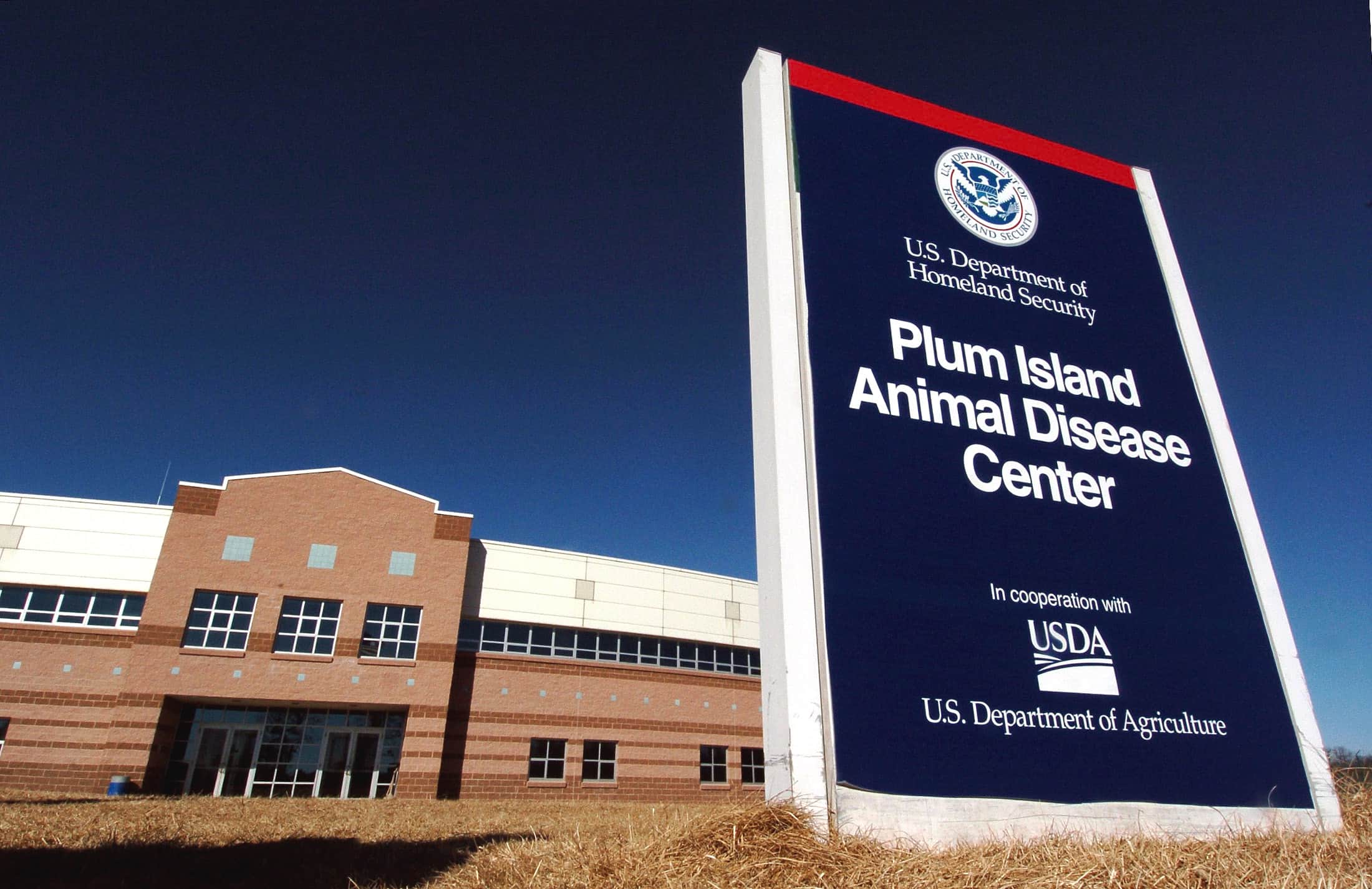HLS.Today – Plum Island is an island in the town of Southold in Suffolk County, New York. The island is situated in Gardiners Bay, east of Orient Point, off the eastern end of the North Fork coast of Long Island. It is about 3 miles (4.8 km) long and 1 mile (1.6 km) wide at its widest point.

The island is the site of the Plum Island Animal Disease Center (PIADC), which was established by the United States Department of Agriculture (USDA) in 1954. The Island is also the site of the former U.S. military installation Fort Terry (c. 1897), and the historic Plum Island Light (c. 1869), and its automated replacement.
Plum Island is owned in its entirety by the United States government, which was considering sale of the island, but suspended the plan in February 2012. Access to the island is controlled by the United States Department of Homeland Security (DHS).
On August 29, 2013, the United States General Services Administration (GSA) and United States Department of Homeland Security (DHS) announced a final “Record of Decision (ROD): Public Sale of Plum Island, New York”.

After years of pressure from organizations including the Preserve Plum Island Coalition (PPIC),[3] the Connecticut Fund for the Environment, along with its permanent regional program Save the Sound[4] and Soundkeeper, Inc. Congress voted in December 2020 to block the sale and preserve Plum Island. In 2020, President Donald Trump signed the legislation.
The historic Plum Island Light Station is undergoing a project to stabilize its structure and prevent further deterioration. The project, led by the Department of Homeland Security (DHS) Science and Technology Directorate (S&T), will refurbish the lighthouse’s cast iron tower and associated components, as well as the roof of the lighthouse keep’s quarters to reflect its historical significance and confirm that both components are structurally sound. S&T is working closely with the New York State Historic Preservation Office (SHPO) to confirm proper selection of materials in the stabilization project to maintain historic character and authenticity in a manner consistent with the Secretary of the Interior’s Standards for Rehabilitation.
Constructed in 1869 and put into service in 1870, the Plum Island Light Station was listed on the National Register of Historic Places in February 2011. The lighthouse property also includes a brick oil house that was built around 1900 and a wood-framed storage shed that was constructed around 1920—all of which are located on a three-acre parcel on the northwestern tip of Plum Island. Various assessments over the past decade have indicated degradation in the structure and the need for significant repairs.
“The Plum Island Lighthouse holds incredible historical and cultural significance from a local and national perspective,” said Dr. Tod Companion, acting director of S&T’s Plum Island Animal Disease Center (PIADC). “We are looking forward to confirming its stability as part of the island’s closure.” The project is expected to be completed by March 2024.

Plum Island, New York
Plum Island, New York, is located approximately 1.5 miles from the eastern end of Long Island’s North Fork. The island is wholly owned by the DHS and primarily serves as a secure and appropriate location for PIADC, DHS’s unique research facility whose mission includes the development of vaccines, diagnostic testing, and applied research to control and eradicate transboundary foreign animal diseases. The island is also home to several legacy properties of historical significance, such as Fort Terry—a former United States Army fortification—and the Plum Island Light Station, neither of which are in service nor support PIADC’s science mission.
DHS has selected ASRC Federal Field Services as the operations and maintenance contractor to perform the stabilization work. The estimated cost of the project is $1.82 million, which includes both onsite labor and support, as well as specialty subcontractors.
Plum Island Animal Disease Center (PIADC)

Plum Island Animal Disease Center (PIADC) is a United States federal research facility dedicated to the study of foreign animal diseases of livestock. It is part of the Department of Homeland Security Directorate for Science and Technology, and operates as a partnership with the U.S. Department of Agriculture. The facility’s director is Dr. Larry Barrett.
Since 1954, the center has been tasked with protecting America’s livestock from animal diseases. During the Cold War, a secret biological weapons program targeting livestock was conducted at the site, which ended in 1969 when President Nixon declared an end to the United States’ offensive bioweapons program. Today the facility maintains laboratories up to biosafety level 3, but has remained controversial as a result of its high risk work and proximity to the New York metropolitan area.
The facility is slated for closure in 2023, with work moving to the National Bio and Agro-Defense Facility under construction in Manhattan, Kansas.







